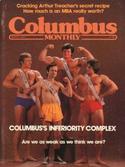A new Hoover Institution (Stanford University) report indicates that California continues to shed corporate headquarters locations to other states. read more »
Charlotte
High-Speed Rail: An Evaluation
Note: This article is adapted from the recently published Reason Foundation report Assessing the Results of the High-Speed Intercity Passenger Rail Program, by Wendell Cox read more »
Of Niche Markets and Broad Markets: Commuting in the US
The six transit legacy cities - mostly urban cores that grew largely before the advent of the automobile - increased their concentration of transit work trips to 57.9% of the national transit commuting, according to the 2018 American Community Survey. At the same time, working at home strengthened its position as the nation’s third leading mode of work access, with transit falling to fourth. The transit commuting market share dropped from 5.0% in 2017 to 4.9% in 2018. read more »
- Login to post comments
A Blast from the Past in Charlotte and Columbus
I saw a couple of recent reposts containing very interesting material from several decades ago in Charlotte and Columbus.
The first is a 25 minute TV special from the 1960s looking at a proposal to issue bonds to fund urban renewal in downtown Charlotte. A few things struck me about this. read more »
- Login to post comments
Population Growth Slowing in Largest US Municipalities
The 2017 Census Bureau population estimates shows that population growth in the nation’s largest municipalities (incorporated cities and equivalent) has declined substantially relative to the healthier gains posted earlier in the decade. read more »
- Login to post comments
2018 How We Pick the Best Cities for Job Growth
The methodology for our 2018 ranking largely corresponds to that used in previous years. We seek to measure the robustness of metro areas’ growth both recently and over time, with some minor corrections to mitigate the volatility that the Great Recession has introduced into the earlier parts of the time series. The ranking is based on three-month rolling averages of the U.S. Bureau of Labor Statistics’ “state and area” unadjusted employment data reported from November 2006 to January 2018. read more »
The Evolving Urban Form: Charlotte
There may be no better example of the post World War II urban form than Charlotte, North Carolina (a metropolitan area and urban area that stretches into South Carolina). Indeed, among the approximately 470 urban areas with more than 1 million population, Charlotte ranks last in urban population density in the United States (Figure 1) and last in the world. According to the United States Census Bureau, Charlotte's built-up urban area population density was 1685 per square mile (650 per square kilometer) in 2010. read more »
As the North Rests on Its Laurels, the South Is Rising Fast
One hundred and fifty years after twin defeats at Gettysburg and Vicksburg destroyed the South’s quest for independence, the region is again on the rise. People and jobs are flowing there, and Northerners are perplexed by the resurgence of America’s home of the ignorant, the obese, the prejudiced and exploited, the religious and the undereducated. read more »
Rust Belt Cities: Invest in Odysseus, Not Barney Fife
Given its legacy of shrinking, the Rust Belt has issues. The issues arose naturally, and relate to the fact things leave, or that so much has left. Particularly, when things leave, the mind—both the individual and the collective city mind—can get protective and restrictive. Neediness arises. The smell of desperation ensues like a pall that can tend to hang over cities, influencing decision making on all levels.
Enter “brain drain”, or that term coined to refer to the outmigration of an area’s educated citizens, particularly it’s young. read more »
The Shifting Geography of Black America
Black population changes in various cities have been one of the few pieces of the latest Census to receive significant media coverage. The New York Times, for example, noted that many blacks have returned to the South nationally and particularly from New York City. The overall narrative has been one of a “reverse Great Migration.” But while many northern cities did see anemic growth or even losses in black population, and many southern cities saw their black population surge, the real story actually extends well beyond the notion of a monolithic return to the South. read more »




















